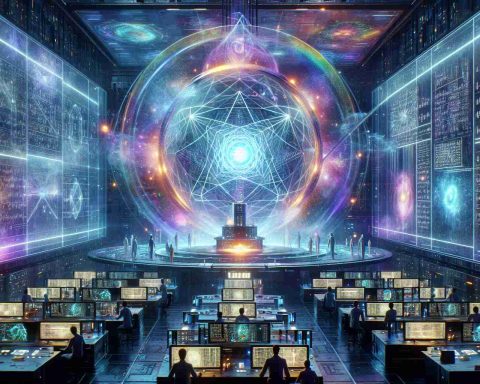- Small Modular Reactors (SMRs) are revolutionizing nuclear energy with their focus on flexibility and efficiency.
- SMRs offer cost-effective construction and rapid deployment, accelerating the transition to low-carbon energy.
- The compact design of SMRs enables easy integration into existing power grids and decentralized power generation.
- Advanced safety features in SMRs include automatic shutdowns and enhanced cooling systems.
- Despite regulatory and perception challenges, SMRs represent a potential breakthrough in sustainable nuclear energy.
The nuclear energy sector is on the cusp of a transformation with the emergence of small modular reactors (SMRs). These cutting-edge reactors promise to revolutionize how we harness nuclear power, focusing on flexibility, efficiency, and reduced environmental impact.
Traditional nuclear reactors, known for their enormous scale and complexity, are giving way to these smaller, scalable units. SMRs are cost-effective to construct and easier to deploy, potentially reducing the price and time required to get nuclear projects off the ground. Their compact design allows for quicker assembly and integration into existing power grids, making them an attractive option for countries seeking a swift transition to low-carbon energy sources.
Moreover, SMRs bring environmental and safety benefits. They utilize advanced cooling systems and fuel configurations that significantly enhance their safety profile. In the event of a malfunction, these reactors are designed to automatically shut down without human intervention, mitigating the risk of catastrophic failures.
What’s truly revolutionary about SMRs is their ability to decentralize nuclear power. Instead of relying on a few massive plants, energy could be generated closer to cities and industries, minimizing transmission losses and enhancing the reliability of power supply.
While challenges remain — such as regulatory hurdles and public perception — the continuous advancements in SMR technology are paving the way for a nuclear renaissance. As nations globally strive for greener energy solutions, SMRs might just be the breakthrough needed to steer nuclear energy into a new, sustainable era.
Are Small Modular Reactors (SMRs) the Future of Sustainable Energy?
How do Small Modular Reactors compare to traditional nuclear reactors in terms of efficiency and safety?
Small Modular Reactors (SMRs) have several advantages over traditional nuclear reactors, particularly concerning efficiency and safety. SMRs are inherently more efficient by design due to their smaller size and modular nature, which allows them to be factory-fabricated and easily transported to the site for assembly. This reduces both construction time and costs. They integrate advanced cooling systems and passive safety features, enhancing their safety profile significantly. These mechanisms can automatically shut down the reactors in case of a malfunction, reducing the likelihood of catastrophic failure and making them less dependent on external power sources and human intervention.
What are the potential market forecasts for Small Modular Reactors (SMRs) in the energy sector?
The market forecast for Small Modular Reactors is promising as countries worldwide are investing in low-carbon and sustainable energy technologies. According to data from industry analysts, the global SMR market is projected to grow at a significant rate over the next decade. This growth is driven by increased demand for clean and reliable energy, as well as policies aimed at reducing carbon emissions. SMRs offer the flexibility needed to be integrated into existing grids and the adaptability to be used in remote locations where traditional grid infrastructure is scarce. This adds to their attractiveness and market potential.
What are some of the controversies and challenges associated with the deployment of Small Modular Reactors?
Despite their promising potential, SMRs face several challenges and controversies. One of the main barriers is the regulatory framework, which has traditionally been designed for larger reactors, making it cumbersome to adapt to the smaller scale of SMRs. There are also public perception issues associated with nuclear energy, primarily due to historical nuclear accidents and concerns about nuclear waste management. Building public trust and ensuring clear, effective communication about the safety and environmental benefits of SMRs are crucial for their widespread adoption. Moreover, geopolitical considerations and the initial costs of RD&D (Research, Development, and Deployment) require strategic investments and international cooperation.
For further insights and updates on the evolution of nuclear energy and SMRs, please visit reputable domains like International Energy Agency (IEA) and World Nuclear Association.
The source of the article is from the blog oinegro.com.br















